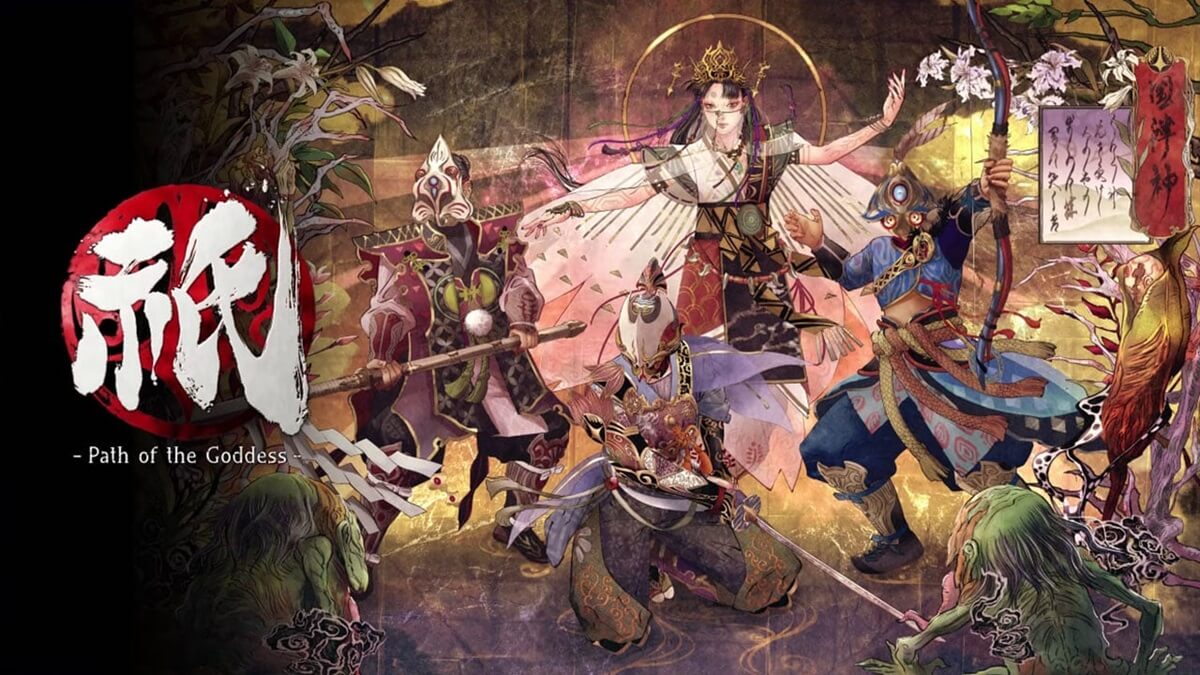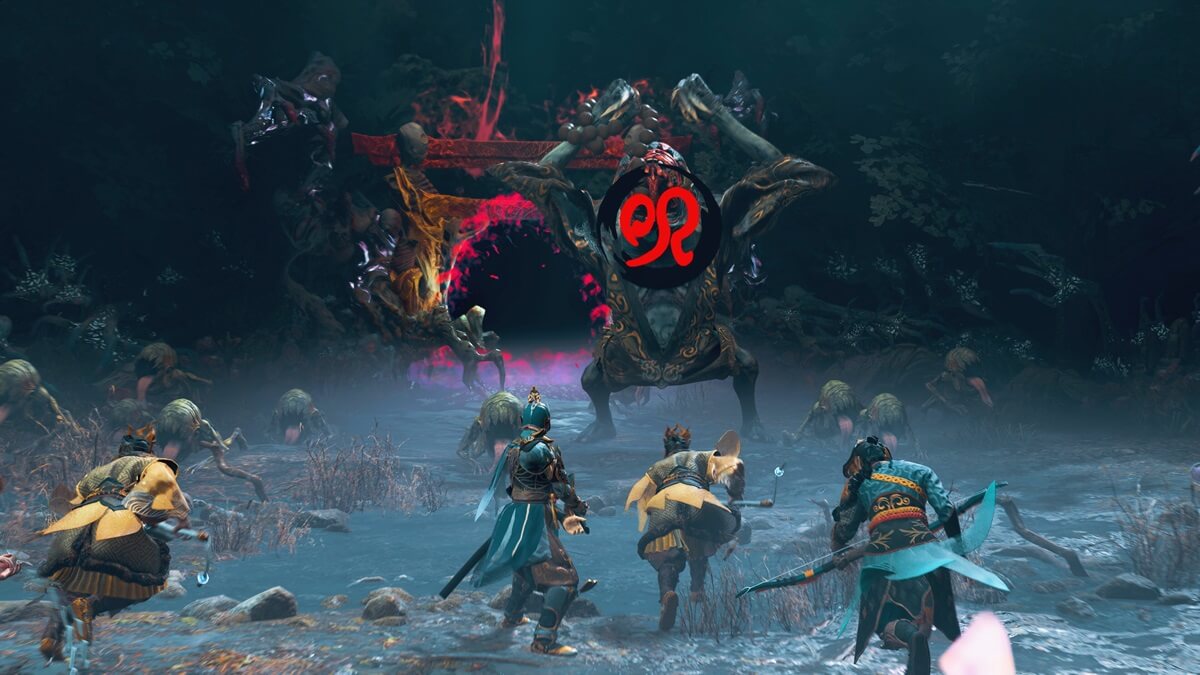“Kunitsu-Gami: Path of the Goddess,” developed by Capcom, is an upcoming action-strategy game that blends traditional Japanese aesthetics with modern gameplay mechanics. Set to release on July 19, 2024, for PlayStation 4, PlayStation 5, Xbox One, Xbox Series S|X, and PC / Steam, the game has already garnered significant attention for its unique art style and gameplay.

Kunitsu-Gami: Path of the Goddess Visual and Artistic Design
One of the most striking features of “Kunitsu-Gami: Path of the Goddess” is its visual design. The game boasts a rich tapestry of traditional Japanese art, infused with modern elements to create a unique and vibrant aesthetic. The environments are meticulously crafted, with details such as the interplay of light and dark, lush greenery, and intricate character designs. Capcom’s use of photogrammetry for clothing and the creation of miniature models for levels adds a layer of authenticity and depth to the visual experience.
Narrative and Atmosphere
The narrative of “Kunitsu-Gami” is deeply rooted in Japanese mythology and folklore. The story revolves around the clash between the spirit realm and mortal man, with players unraveling the lore through the progression of the game. Despite the limited dialogue, the atmosphere is enriched by Chikara Aoshima’s relaxing score and the immersive environments that evoke the feeling of an idyllic Japanese mountain path.
Replayability and Challenges
“Kunitsu-Gami: Path of the Goddess” promises high replayability due to its challenging gameplay and variety of stages. Each stage presents unique objectives and obstacles, encouraging players to develop new strategies and experiment with different combinations of units and upgrades. The game also includes collectible items and achievements that reward players for mastering the mechanics and achieving perfection in each level.
Kunitsu-Gami: Path of the Goddess Gameplay

“Kunitsu-Gami: Path of the Goddess” presents a unique blend of action, strategy, and tower defense mechanics, set within a beautifully crafted world inspired by traditional Japanese art. Players are thrust into the role of Soh, a masked guardian tasked with protecting Yoshiro, a divine maiden, from the malevolent forces known as the Seethe. The offline games gameplay unfolds over a dynamic day and night cycle, each with distinct objectives and challenges.
Core Mechanics
- Daytime Exploration and Preparation:
- Rescue and Gather: During the day, players explore the environment, rescuing trapped villagers and gathering essential resources. This phase focuses on building up defenses and preparing for the impending night attacks.
- Resource Management: Players must manage resources carefully to assign roles to the villagers and build structures that will be critical in the nighttime defense. Each villager can be upgraded to enhance their abilities and durability in combat.
- Customization and Upgrades: Soh can be equipped with special charms that modify his combat style and grant unique abilities. These upgrades are essential for adapting to various challenges and enemy types.
- Nighttime Defense:
- Defending Yoshiro: At night, the Seethe attack, and players must protect Yoshiro as she performs her purification dance to cleanse the shrine. This involves strategic placement of units and direct combat with the Seethe.
- Combat System: Soh utilizes a variety of attack combos, including light attacks, spirit slashes, and ultimate abilities triggered by equipped charms. The combat is designed to be fluid and dynamic, allowing players to chain attacks and adapt to different enemy types.
- Strategic Placement: Villagers play a crucial role in defense, acting as towers in a tower defense game. They can be strategically placed to block paths and attack incoming Seethe, making the defense phase a blend of real-time strategy and action.
Gameplay Dynamics
- Dynamic Day-Night Cycle:
- Preparation Phase: The daytime phase is relatively calm, allowing players to plan their strategy, gather resources, and position their units. This phase requires careful management to ensure survival during the night.
- Combat Phase: The nighttime phase is intense and action-packed, requiring players to defend against waves of Seethe. This phase tests the player’s ability to execute their strategy and adapt to changing conditions on the fly.
- Variety of Stages and Challenges:
- Unique Objectives: Each stage in “Kunitsu-Gami” offers unique challenges and objectives, encouraging players to adopt different strategies. The variety in stage design keeps the gameplay fresh and engaging.
- Boss Battles: Boss battles introduce additional layers of strategy and challenge. These encounters require precise execution of combat skills and strategic placement of units to overcome powerful enemies.
- Replayability:
- Achievements and Collectibles: The game includes various achievements and collectibles that encourage players to revisit stages and refine their strategies. This adds a significant replayability factor, as players strive to master each level and uncover all the game’s secrets.
Visual and Artistic Presentation
“Kunitsu-Gami: Path of the Goddess” is not just about gameplay mechanics; it also offers a stunning visual experience. The game features a vibrant art style inspired by traditional Japanese aesthetics, combined with modern design elements. Environments are richly detailed, with dynamic lighting and intricate character designs that enhance the immersive experience.
Kunitsu-Gami: Path of the Goddess Storyline
“Kunitsu-Gami: Path of the Goddess” is set in a mystical world inspired by traditional Japanese mythology and folklore. The game’s storyline centers on the conflict between the spirit realm and the mortal world, with players taking on the role of Soh, a masked guardian, tasked with protecting Yoshiro, a divine maiden, from the malevolent forces of the Seethe.
Kunitsu-Gami: Path of the Goddess Main Characters
- Soh:
- Soh is the protagonist, a skilled warrior and guardian with a mysterious background. He is equipped with various combat abilities and plays a crucial role in defending Yoshiro and the villagers from the Seethe.
- As a character, Soh is deeply connected to the spiritual world, and his journey involves uncovering the secrets of his past and understanding his role in the grander scheme of the conflict.
- Yoshiro:
- Yoshiro is a divine maiden with the ability to purify corruption through her sacred dance. Her primary role is to cleanse the Torii gates and shrines that have been defiled by the Seethe.
- Yoshiro’s purification dance is a central element of the gameplay, requiring protection as she performs her rituals to restore balance and harmony to the world.
Setting
The game is set on Mount Kafuku, a mystical location overrun by the Seethe, demonic entities that spread corruption and chaos. The environment is richly detailed, blending traditional Japanese aesthetics with supernatural elements. This setting provides a backdrop for the story, creating a world that is both beautiful and dangerous.
Plot
The storyline of “Kunitsu-Gami: Path of the Goddess” unfolds through a series of stages, each presenting unique challenges and narrative developments. The primary objective is to purify the corrupted shrines and Torii gates scattered across Mount Kafuku, which involves:
- Purification Missions:
- Each stage requires Soh and Yoshiro to reach and cleanse a corrupted shrine. During the day, players prepare by rescuing villagers, gathering resources, and positioning defenses.
- At night, the Seethe attack in waves, and Soh must defend Yoshiro while she performs her purification dance. Successful purification of a shrine drives back the Seethe and restores peace to that area.
- Uncovering the Lore:
- As players progress through the game, they uncover the rich lore of the world, learning about the origins of the Seethe and the ancient traditions that Yoshiro represents.
- Collectibles such as Emaki scrolls provide additional context and background, enriching the story and deepening the player’s connection to the game’s world.
- Character Development:
- Soh’s journey is one of self-discovery, as he learns more about his past and his connection to the spiritual realm. The interactions between Soh and Yoshiro reveal their intertwined destinies and the importance of their mission.
- The villagers, who are saved and empowered by Soh, also play a role in the unfolding story, highlighting themes of community, resilience, and the fight against darkness.
Themes
The story of “Kunitsu-Gami: Path of the Goddess” explores several themes:
- Balance between Worlds:
- The game emphasizes the balance between the spiritual and mortal realms. Yoshiro’s purification rituals are symbolic of restoring harmony and countering the corruption spread by the Seethe.
- Resilience and Redemption:
- The villagers’ transformation from helpless victims to empowered defenders mirrors broader themes of resilience and redemption. Their journey from despair to hope underlines the importance of collective effort and unity in overcoming adversity.
- Cultural Heritage:
- The storyline deeply integrates elements of Japanese culture and mythology, paying homage to traditional art forms, spiritual practices, and folklore. This cultural richness adds depth and authenticity to the narrative.
Conclusion
“Kunitsu-Gami: Path of the Goddess” stands out as a compelling blend of action, strategy, and traditional Japanese art. Its unique gameplay mechanics, stunning visuals, and rich narrative promise a fresh and engaging experience for players. With its release just around the corner at July 19,2024. It is poised to be a standout title in Capcom’s lineup for 2024, offering a captivating journey through a beautifully crafted world. Whether you are a fan of action games, strategy titles, or Japanese culture, “Kunitsu-Gami: Path of the Goddess” is definitely a game to watch.




